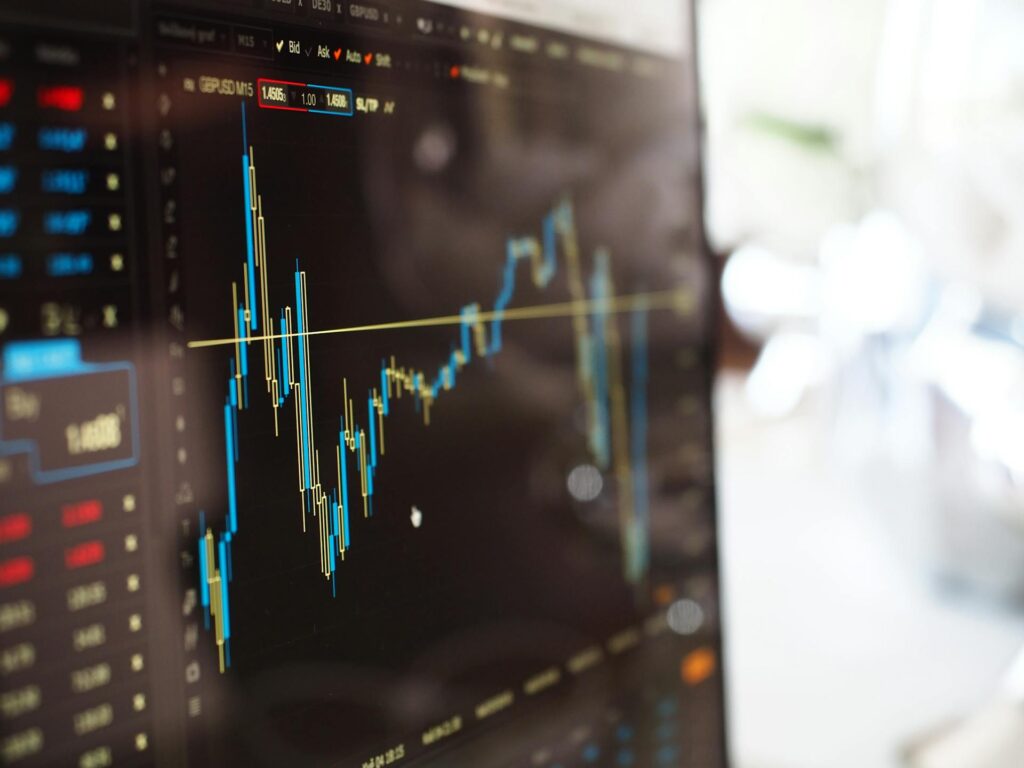In the intricate dance of the forex market, a silent conductor sets the pace: interest rates. These seemingly innocuous figures hold immense power, influencing currency valuations, investor sentiment, and ultimately, the very direction of currency pairs. This article explores the intricate relationship between interest rates and forex trading, demystifying how central bank policies, economic growth, and global events all contribute to the symphony of the market, offering valuable insights for traders seeking to understand the driving forces behind currency fluctuations.
How Interest Rates Affect Currency Value
Interest rates wield substantial influence over the value of currencies in the Forex market. When a country’s central bank alters its interest rates, a ripple effect is felt throughout the currency exchange landscape.
For instance, if a central bank decides to raise interest rates, it typically signals a robust and growing economy. This attracts foreign investors seeking higher returns on their investments, causing an influx of capital into that country. The increased demand for the currency then elevates its value in the Forex market.
Conversely, a reduction in interest rates can suggest economic challenges, leading to a decrease in foreign investment. The diminished appeal of lower returns often results in a depreciation of the country’s currency.
Carry Trade Strategy
The carry trade strategy is a distinctive approach in Forex trading that capitalizes on interest rate differentials between currencies. Here’s a breakdown of this strategy, emphasizing its key components:
- Definition and Explanation:
- The carry trade involves borrowing in a currency with a low-interest rate and investing in a currency offering a higher interest rate.
- Traders aim to profit from the interest rate differential, earning a yield on the interest rate spread between the two currencies.
- Risks and Rewards:
- Rewards:
-
-
- The primary allure lies in the potential for significant returns due to interest differentials.
- Traders can benefit from both capital appreciation and interest earnings.
-
-
- Risks:
-
-
- Exchange rate volatility can erase profits or lead to losses.
- Unforeseen economic events or sudden interest rate changes can amplify risks.
-
- Currency Pairs and Selection:
- Traders select currency pairs where there’s a substantial interest rate gap.
- The chosen pairs typically involve a currency with a lower interest rate as the funding currency and a currency with a higher interest rate as the investment currency.
- Market Conditions:
- Carry trades often thrive in stable market conditions with low volatility.
- High volatility may lead to unpredictable exchange rate movements, impacting the effectiveness of the strategy.
In essence, the carry trade strategy requires a nuanced understanding of interest rate differentials, market conditions, and global economic factors. Traders implementing this strategy must carefully analyze risks and rewards while staying vigilant to adapt to changing market dynamics.
Economic Indicators and Interest Rates
Before we delve into the intricate relationship between economic indicators and interest rates, let’s establish a foundational understanding. The following table outlines key economic indicators, shedding light on their significance in the context of Forex trading.
| Economic Indicator | Definition | Significance in Forex Trading |
| Unemployment Rates | Percentage of the labor force without employment | A lower unemployment rate often correlates with economic growth, affecting interest rates. Higher employment can lead to increased consumer spending and inflation. |
| Inflation Rates | The rate at which the general price level rises | Central banks may adjust interest rates to control inflation. Forex traders monitor inflation trends as they impact currency values. |
| GDP Growth | Total value of goods and services produced | Robust GDP growth may prompt central banks to raise interest rates to prevent overheating. Slower growth could lead to rate cuts to stimulate the economy. |
Now, let’s explore these economic indicators in more detail:
- Unemployment Rates:
- A low unemployment rate is generally positive for a country’s economy, indicating high employment levels and potential wage growth.
- Central banks may respond to low unemployment by considering interest rate hikes to curb inflationary pressures.
- Inflation Rates:
- Inflation erodes the purchasing power of a currency, influencing central banks to adjust interest rates accordingly.
- Traders closely monitor inflation rates, as unexpected spikes or declines can impact currency values.
- GDP Growth:
- Strong GDP growth suggests a healthy economy, potentially leading to rising interest rates to prevent inflation.
- Conversely, low or negative GDP growth may prompt central banks to lower interest rates to stimulate economic activity.
Understanding the relationship between economic indicators and interest rates is pivotal for Forex traders. By monitoring these indicators and comprehending their implications, traders can make informed decisions, positioning themselves advantageously in the dynamic Forex market.
Central Banks’ Policies
Central banks play a crucial role in shaping the economic landscape, particularly through their monetary policies. Understanding how these policies influence interest rates is essential for navigating the Forex market.
Monetary Policy and Interest Rates
Central banks utilize monetary policy tools to control the money supply and, consequently, interest rates. By adjusting policy rates such as the benchmark interest rate, central banks influence borrowing costs for businesses and consumers. When a central bank raises interest rates, it aims to cool down an overheating economy and control inflation. Conversely, lowering interest rates is a strategy to stimulate economic activity during periods of low growth or recession.
Forward Guidance
Forward guidance is a communication strategy employed by central banks to provide insights into their future policy intentions. By offering guidance on the likely direction of interest rates based on economic conditions, central banks aim to manage expectations and influence market behavior. Forex traders closely scrutinize these forward guidance statements, as they can significantly impact currency values. Forward guidance helps traders anticipate potential interest rate changes, enabling them to position themselves strategically in response to the central bank’s indicated policy direction.
Global Economic Events
Global economic events exert significant influence on the Forex market, shaping currency values and market sentiment. Understanding the impact of these events is crucial for Forex traders seeking to navigate the dynamic landscape of currency trading.
- Financial Crises:
- Financial crises, such as the 2008 global financial crisis, have profound implications for currency markets.
- During periods of financial turmoil, investors flock to safe-haven currencies like the US dollar and Swiss franc, causing fluctuations in currency pairs.
- Pandemics and Economic Turbulence:
- Events like the COVID-19 pandemic disrupt global supply chains, dampen consumer demand, and destabilize financial markets.
- Central banks and governments implement fiscal and monetary measures to mitigate the economic impact, leading to currency volatility.
- Geopolitical Tensions:
- Geopolitical tensions, such as trade disputes or military conflicts, can roil currency markets.
- Uncertainty surrounding geopolitical events prompts investors to seek refuge in safe-haven currencies or currencies perceived as less risky.
- Natural Disasters:
- Natural disasters, such as hurricanes, earthquakes, or tsunamis, can have immediate and lasting effects on affected economies.
- Currency values may fluctuate as investors assess the economic fallout and anticipate government responses to the disaster.
- Economic Data Releases:
- Key economic data releases, including GDP growth figures, employment reports, and inflation data, shape market expectations and influence currency values.
- Traders closely monitor these releases for insights into the health of economies and potential central bank policy shifts.
By staying abreast of global economic events and their implications for currency markets, traders can better anticipate market movements and adjust their trading strategies accordingly. Flexibility, adaptability, and a keen understanding of the interconnectedness of global events are essential for success in Forex trading.

